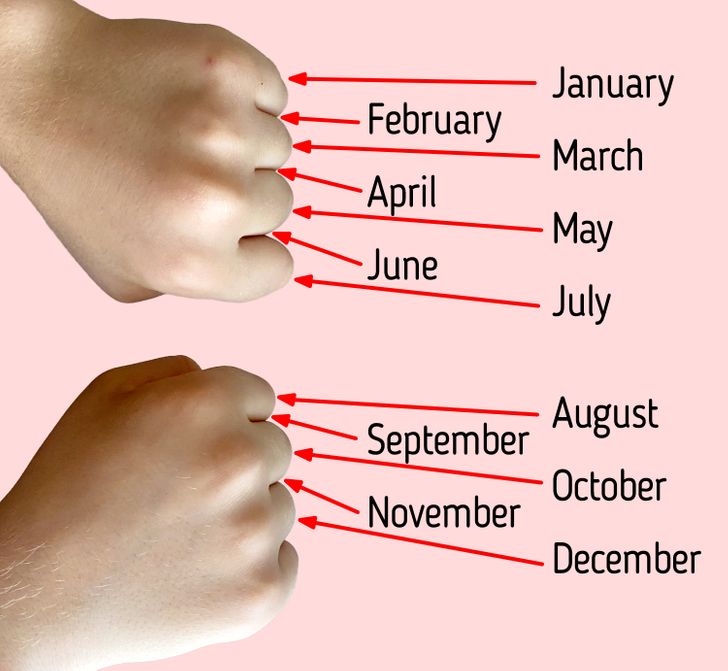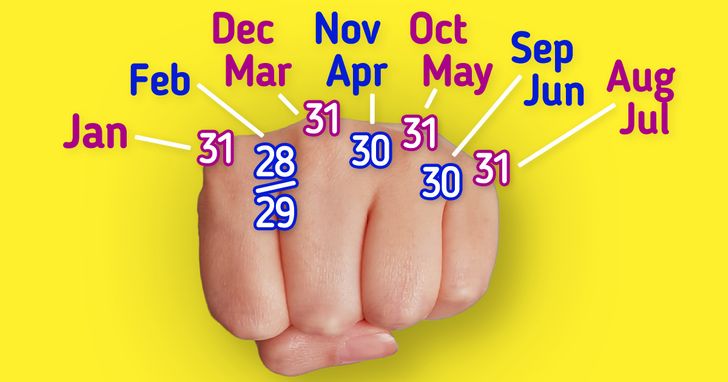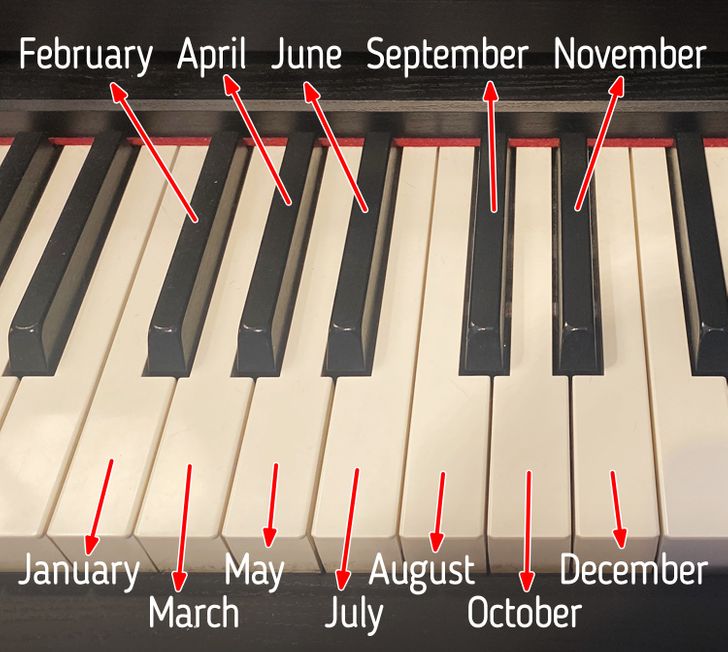Why Months Have a Different Number of Days and How to Memorize Them
Why does February have 28 or 29 days while other months have 30 or 31? Why are there 12 months in a year? The history of the Gregorian calendar is really interesting and is built on the superstitions of our ancestors to some extent.
At 5-Minute Crafts, we decided to answer these questions and also share some tips with you that can help your kids memorize how many days each month has.
A few words about why a year is divided into months
A month is a unit of time that is approximately equal to the length of the lunar cycle. Each lunar (or synodic) month is approximately 29.53 days (that’s 29 days, 12 hours, 44 minutes, and 2.8 seconds). This is the period of time during which the Moon passes a full cycle from its certain phase to the same phase — from full moon to full moon, for example.
Archaeologists believe that people counted days according to moon phases, even in the Paleolithic period.
We live according to a calendar in which the names and length of the months were determined by the Romans. The Roman calendar underwent major changes that resulted in the Julian and Gregorian calendars. In both calendars, the year is divided into 12 months with a certain number of days in each, except for February:
? January — 31
? February — 28 (29 days in a leap year)
? March — 31
? April — 30
? May — 31
? June — 30
? July — 31
? August — 31
? September — 30
? October — 31
? November — 30
? December — 31
Why months have a different number of days
The main reason why the months have different lengths is the lunar cycle, which consists of 29.53 days. There are 365.25 days in a year, and this number can’t be divided by 29.53 evenly.
In the most ancient ancestor of the Gregorian calendar, which is the Roman calendar mentioned above, there were 10 months, not 12 months. 6 months with 30 days and 4 months with 31 days. The Roman king, Numa Pompilius (753–673 BC), added 2 more months to the original months: January and February.
At that time, there was a superstition in Rome that even numbers could bring bad luck, so Numa wanted to avoid even numbers appearing on the calendar. Numa decided that all 30-day months should become 29-day months. It helped to avoid bad luck, but not entirely.
There is a rule in math that the sum of an even number (12 months) of odd numbers will be even no matter what. Numa didn’t want the whole year to consist of an even number of days, so he decided to “sacrifice” February and make it have 28 days. February was decided to become a month when the rituals of veneration for the dead would be carried out since the month was obviously unlucky. As a result, Numa’s calendar consisted of 355 days.
As you know, the calendar was changed after that, but February retained the number of days assigned to it by Numa.
Julius Caesar was the one who changed the months to the way we know them now. Since 46 BC, the months began to have 31 and 30 days alternatively, except for February.
How to memorize how many days a month has

To memorize how many days each month has, there is a simple trick that you always have at hand. You just need to look down at the knuckles of your hands. You should name the months from left to right without touching your thumb. You’ll see that long months fall on the knuckles, and short months fall on the dimples between them, as shown in the photo above.

💡 For the trick mentioned before, you can also use only one hand, going backward after counting July.

Another trick uses the piano keyboard. The keys, starting from the F note, are positioned exactly like the months in the calendar. The long months fall on the white keys, and the short months fall on the black keys.